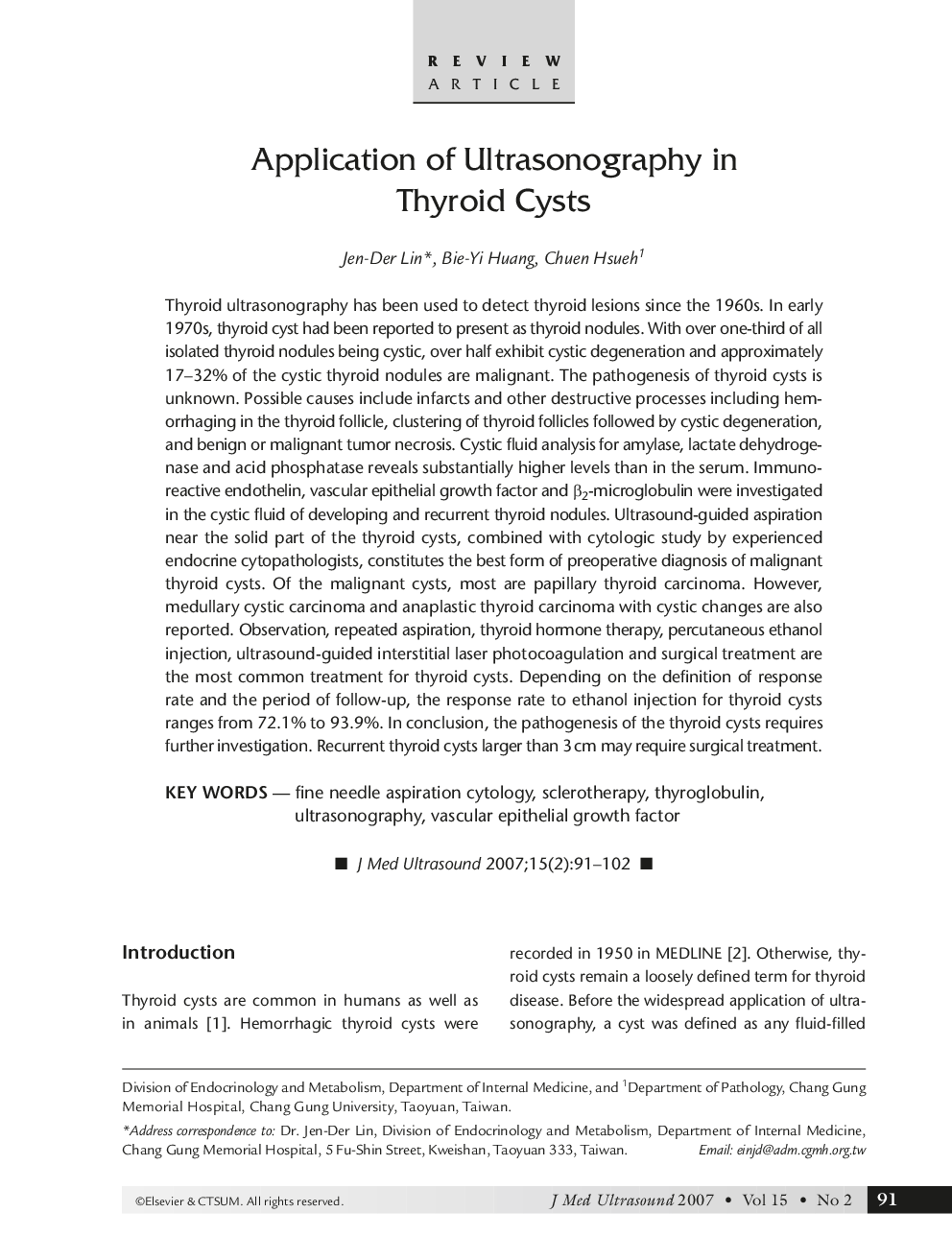| Article ID | Journal | Published Year | Pages | File Type |
|---|---|---|---|---|
| 4233394 | Journal of Medical Ultrasound | 2007 | 12 Pages |
Thyroid ultrasonography has been used to detect thyroid lesions since the 1960s. In early 1970s, thyroid cyst had been reported to present as thyroid nodules. With over one-third of all isolated thyroid nodules being cystic, over half exhibit cystic degeneration and approximately 17–32% of the cystic thyroid nodules are malignant. The pathogenesis of thyroid cysts is unknown. Possible causes include infarcts and other destructive processes including hemorrhaging in the thyroid follicle, clustering of thyroid follicles followed by cystic degeneration, and benign or malignant tumor necrosis. Cystic fluid analysis for amylase, lactate dehydrogenase and acid phosphatase reveals substantially higher levels than in the serum. Immunoreactive endothelin, vascular epithelial growth factor and β2-microglobulin were investigated in the cystic fluid of developing and recurrent thyroid nodules. Ultrasound-guided aspiration near the solid part of the thyroid cysts, combined with cytologic study by experienced endocrine cytopathologists, constitutes the best form of preoperative diagnosis of malignant thyroid cysts. Of the malignant cysts, most are papillary thyroid carcinoma. However, medullary cystic carcinoma and anaplastic thyroid carcinoma with cystic changes are also reported. Observation, repeated aspiration, thyroid hormone therapy, percutaneous ethanol injection, ultrasound-guided interstitial laser photocoagulation and surgical treatment are the most common treatment for thyroid cysts. Depending on the definition of response rate and the period of follow-up, the response rate to ethanol injection for thyroid cysts ranges from 72.1% to 93.9%. In conclusion, the pathogenesis of the thyroid cysts requires further investigation. Recurrent thyroid cysts larger than 3 cm may require surgical treatment.
